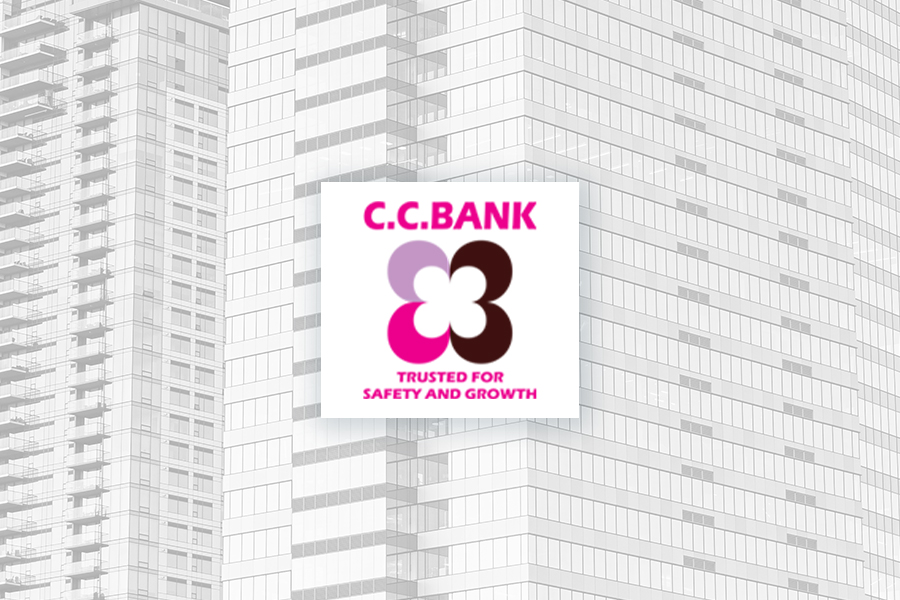 Chennai Central Co Operative Bank IFSC Code and MICR Code
Chennai Central Co Operative Bank IFSC Code and MICR Code
Find Chennai Central Co Operative Bank IFSC Code, MICR Code and branch details for NEFT, RTGS & IMPS transactions.
 Chennai Central Co Operative Bank IFSC Code and MICR Code
Chennai Central Co Operative Bank IFSC Code and MICR CodeFind Chennai Central Co Operative Bank IFSC Code, MICR Code and branch details for NEFT, RTGS & IMPS transactions.
 Chennai Central Co Operative Bank IFSC Code Finder - Select Your State
Chennai Central Co Operative Bank IFSC Code Finder - Select Your StateThe Chennai Central Co-operative Bank was formerly known as the Madras District Co-operative Central Bank Ltd when it was registered as a Cooperative Society in 1930. The bank has expanded over the decades and currently offers various financial services. It is easy to make successful online transfers through the Chennai Central Co-operative Bank IFSC Code.
The CCB has its head office in Prakasam Salai Broadway, Chennai, Tamil Nadu. It has a total of sixty-nine branches and works with cooperative services and rural and agricultural sectors. The bank offers low-interest loans to its customers along with online banking services.
The Indian banking system uses distinct codes like the IFSC, MICR, and SWIFT codes for domestic and international online fund transfers between two accounts. The IFSC and MICR codes are allotted by the Reserve Bank of India (RBI) to individual bank branches in the country.
In this article, we'll read more about the IFSC code and MICR code and learn how to find the codes online and offline. We will also read about online money transfer methods like NEFT, RTGS, and IMPS.

Indian Financial System Code or IFSC code is an 11-character unique code provided by RBI to every bank branch in the country. The IFSC code is used to initiate online fund transfers between two accounts. It helps correctly identify the branch where the account is located and speeds up the electronic transaction.
The IFSC code is a combination of the bank code and branch code with a zero connecting them. A bank's first four characters are its code, and the fifth character is zero (0). The remaining six characters are the branch code, which can be alphabets, numbers, or both.
For example, the Chennai Central Co-operative Bank Head Office Branch IFSC Code is TNSC0010500. It is located at Prakasam Salai Broadway, Chennai. Here,
The IFSC code removes discrepancies and streamlines the online banking system for smoother and faster transactions when using NEFT, RTGS, or IMPS. Using the wrong IFSC code can lead to a failed transaction. You are likely to receive the money within a few business days.
However, the transaction might be successful if both accounts belong to the same branch. What happens if the IFSC code and account number are wrong? It can lead to a failed transaction, or the amount can be credited to another account (if the account number matches). Contact your branch immediately in such instances.
It is crucial to find the correct IFSC code when sending money to another person's account. This will ensure that your money will be sent to the right person in a quick time.
The Magnetic Ink Character Recognition Code (MICR) is a unique 9-digit code allotted by RBI to individual bank branches to validate the authenticity of the cheques. With the help of MICR technology, the MICR code is printed at the bottom of the cheque.
The Chennai Central Co-operative Bank MICR code is 600092002. This code is divided into three parts- city code, bank code, and branch code. For example,
The banking system uses the MICR code to verify and authenticate that the cheque is genuine and valid. This is done during ECS (Electronic Clearing Process) to speed up cheque clearing and deposit money to the receiver's account in fewer days.
However, unlike the IFSC Code, the MICR code is not used by the customer. It is useful to the banking staff that processes the cheques electronically. Furthermore, the MICR code is not allotted to every bank branch in the country. Some banks have non-MICR branches that still process cheques manually.

So, how do you find the banking codes of a branch to initiate online fund transfers like NEFT, RTGS, and IMPS? Luckily, you can find the IFSC and MICR codes online and offline. The online methods are useful for senders, while the offline methods are convenient for beneficiaries to know the IFSC code of their bank.
Let's look at the different ways to find the Chennai Central Co-operative Bank IFSC Code and make an online payment anytime you want. Save a copy of the codes for easy reference.
Using an online search tool is an easy way to find the IFSC, MICR, and SWIFT (if applicable) codes of a bank. You can access free websites like Find Your Bank to get the banking codes and basic information about the bank branch. Always use reliable sites to get the correct codes.
Go to your browser and open https://findyourbank.in/
You can use the form on the home page to search for the IFSC code of a bank branch. The form has drop-down fields, which simplify the process. The page is automatically reloaded after each selection to prevent confusion.
The webpage will reload to provide you with the primary details about the branch. The bank branch details like name, address, and contact information will be listed along with the IFSC, MICR, and SWIFT (if applicable) codes.
You can download the Find Your Bank App on your Android smartphones from Play Store and use it to find the banking codes whenever necessary. The app is secure, reliable, and free to use.
An account holder can apply for a chequebook with the branch. The first page of the chequebook will have the IFSC and MICR codes printed for user convenience. The codes are also printed on each cheque. The IFSC code can be found at the top of the cheque beside the bank's logo. On the bottom of the cheque, beside the check number, you will find the MICR code.
The bank provides a passbook to every account holder to record the transactions in a physical booklet. The first page of the passbook carries the following information:
Refer to your passbook to know the IFSC code of your bank and share it with the sender to receive money through online transfers.
The bank's official portals are also easily accessible to find the IFSC code of a branch. Check the bank's website or mobile banking app.
As a last attempt, you can call the bank's customer care to find the IFSC code. You need to know the branch's contact number or name (if you contact the central customer care). Non-account-holders can also ask for the IFSC code of a bank branch.

We can't deny the convenience and ease of using online fund transfer methods to send money to any bank account in the country. Payment methods like NEFT, RTGS, and IMPS are used for domestic transactions, while Visa Money Transfers, etc., are used for international transactions.
Use the bank's IFSC Code to initiate an electronic fund transfer to an account with CCB. Let's read more about the three most popular wire transfer methods.
NEFT is a popular and highly used fund transfer method to send money online. It uses the DNS (Deferred Net Settlement) system, where the transactions are processed in batches. Your NEFT payment may take around two or three hours to be credited to the beneficiary's account.
NEFT transactions don't have a minimum or maximum limit for the amount to be transferred. Moreover, it works round the clock and throughout the year (24*7*365). You can NEFT any number of times to send money electronically to another bank account.
The transactions can be initiated through net/ mobile banking accounts or branches. Each transaction has a small fee, depending on the amount you send. The transaction/ service charges range between Rs. 2.50 and Rs. 25 plus GST.
The following details are required for an NEFT transaction:
RTGS is a secure real-time payment system used to send money instantly to another bank account within the country. It is used for emergencies and for transferring large amounts immediately. RTGS can also be initiated via net/ mobile banking and the bank branch. However, RTGS payments are irreversible.
For RTGS transactions, there is a minimum limit of Rs. 2 lakhs but no maximum limit. The transaction fee is slightly higher compared to NEFT payments. The service/ transaction charge ranges between Rs. 25 and Rs. 50 + GST for RTGS payment. NEFT and RTGS transactions require the same details.
IMPS is an immediate online fund transfer method that can be used 24*7 and even on bank holidays. The money will be instantly credited to the beneficiary's account. IMPS uses the Mobile Money Identifier (MMID) to facilitate transactions between two bank accounts or registered mobile numbers.
Apply at the branch to get an MMID for IMPS transactions. This payment mode can be used via net/ mobile banking, bank branch, ATM, SMS, or AADHAR. The minimum limit for an IMPS transaction is Re. 1, and the maximum limit is Rs. 2 lakhs. The transaction charges depend on the bank but cannot exceed Rs. 25 plus GST.
You require the following for an IMPS transaction:

The Madras District Co-operative Central Bank Ltd was registered in 1930 as a Cooperative Society to provide financial assistance to the primary and wholesale cooperative societies in Chennai city. The bank was later renamed Chennai Central Co-operative Bank.
It got the license for banking activities under Section 22 of the Banking Regulation Act of 1949 after thirty-nine years (in 1979). The bank launched its Banking at the Doorsteps campaign in the same year (1979) to take banking services to individual citizens in each area in Chennai.
Chennai Central Co-operative Bank has sixty-nine branches, including the head office in Prakasam Salai (Broadway). It offers net banking and mobile banking services to account holders. CCB has grown exponentially over the years and is one of the most popular banks in Chennai.
You can get the account number from the passbook and chequebook of the account holder. Account numbers usually start with the branch code for easy identification. You can also find the account number after logging into your net/ mobile banking account.
The Chennai Central Co-operative Bank stays open from 8.30 AM to 2.30 PM. From Monday through Saturday, the bank is open and is closed on Sundays.
The customer care number of Chennai Central Co-operative Bank are 044- 23458708, 23458709, 23458710, 23458711, 23458712, and 23458713.
Yes. You can download the C.C Bank App on your Android smartphones from Google Play Store.